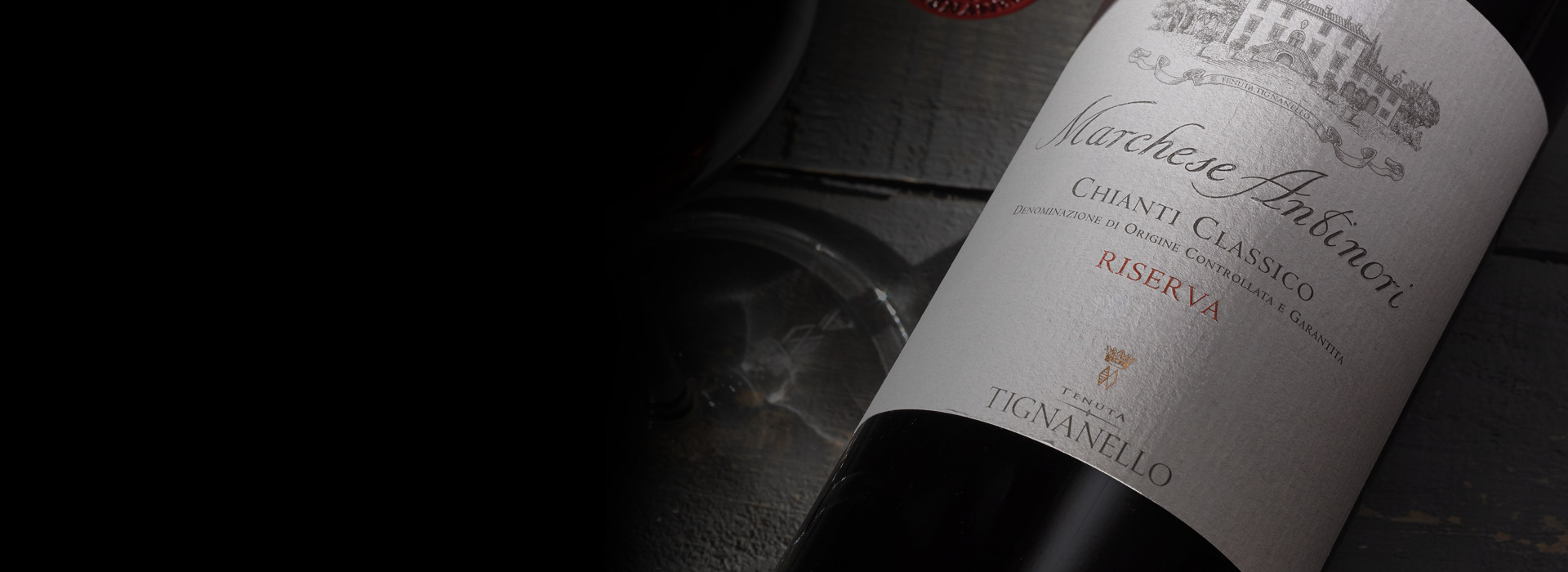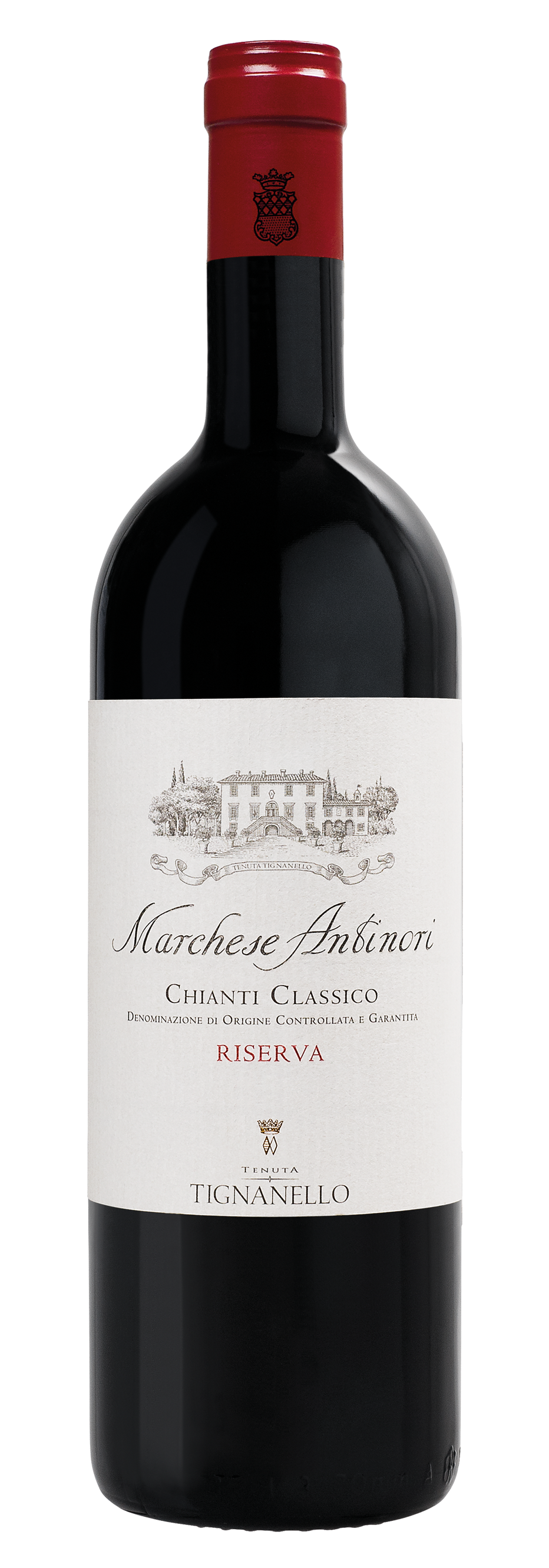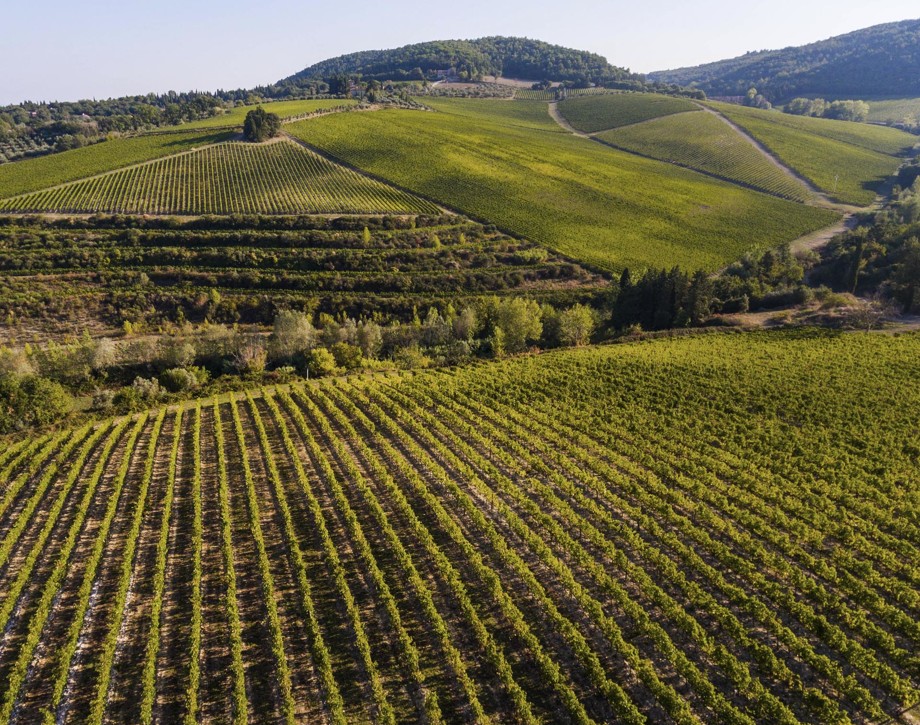Marchese Antinori

Climate
Autumn of 2010 and the winter of 2011 were characterized by cold and rainy weather and by a bit of snowfall at the end of 2010. Early 2011, instead, was somewhat dry, with a mild spring which led to an early bud burst, ten days ahead of the seasonal average in the zone. The growing season was quite favorable until July, which was cool, returning the cycle of vine development to seasonal norms. The wines then suffered from a prolonged period of high temperatures, a heat wave which began around August 10th and continued up until mid-September. The Sangiovese grapes continued their ripening, though slowed by the extended heat, but then benefitted from the change in climate which began around September 25th; nighttime temperatures dropped and the swings from daytime heat to evening and nighttime coolness aided grape development, allowing picking to begin on September 27th and to conclude by October 10th. The picking of the Cabernet was concentrated during the first ten days of October - it began with the earlier-ripening vineyard parcels and concluded with the higher lying areas. A careful selection of the grape bunches was very important in the case of all the different grape varieties, as was, to an even greater extent, the selection of the individual berries on the sorting tables; thanks to these fundamentally important operations, it was possible to ferment grapes of very high potential, a crop which, from the very beginning, gave musts rich in color and structure with excellent ripeness and much varietal character.
Vinification
The climatic conditions of the vintage imposed, from the moment of the harvest itself, a careful selection of the bunches and even of the individual berries; the bunches were delicately destemmed and the berries rigorously selected on the sorting tables in order to maintain to the maximum extent the aromatic and flavor typicality so essential both in Sangiovese-based wines and in the Cabernet as well. Once in the stainless steel tanks, the fermentation lasted approximately a week and was followed by a further nine to ten day period of skin contact. After being run off its skins, the wine went immediately into small oak barrels, principally French in origin, where it was put through a spontaneous malolactic fermentation which finished by the end of the year. After racking, the wines, still separated on the basis of their vineyard provenance, were aged for approximately a year in French and Hungarian oak barrels. The wine was then bottled and given a further twelve months of bottle aging before release.
Historical Data
The Tignanello estate is located in the heart of the Chianti Classico production zone, nestled between the valleys of the Greve and Pesa rivers, and extends over close to 800 total acres (319 hectares), some 130 of which (415 hectares) are planted to vines. The vineyards consist principally of the native Sangiovese grape along with such non-traditional varieties as Cabernet Sauvignon and Cabernet Franc. The Marchese Antinori is an historic wine of the Antinori cellars which, since 2011, is produced from the grapes of the Tignanello estate. It is a wine which presents itself as the full expression of the quality and elegance of the Sangiovese of this part of Tuscany.
Tasting Notes
A very intense ruby red in color with purple highlights, the 2011 Marchese Antinori Chianti Classico shows aromas of great ripeness characterized by notes of such red fruit as cherries, raspberries, and red currants along with liquorice and vanilla. On the palate, the roundness and firmness of the tannins give much drinking pleasure despite the wine’s young age. The lingering finish and aftertaste add length and enjoyment.
Awards
Antonio Galloni 92/100 USA

The Wine
This Antinori family’s historic label, since the 2011 vintage Marchese Antinori has been produced with grapes exclusively from the Tignanello vineyard. It’s made almost entirely with Sangiovese with a small percentage of other complementary varieties. A wine that fully expresses the quality and elegance of Sangiovese grapes grown in this area.

Climate
Autumn of 2010 and the winter of 2011 were characterized by cold and rainy weather and by a bit of snowfall at the end of 2010. Early 2011, instead, was somewhat dry, with a mild spring which led to an early bud burst, ten days ahead of the seasonal average in the zone. The growing season was quite favorable until July, which was cool, returning the cycle of vine development to seasonal norms. The wines then suffered from a prolonged period of high temperatures, a heat wave which began around August 10th and continued up until mid-September. The Sangiovese grapes continued their ripening, though slowed by the extended heat, but then benefitted from the change in climate which began around September 25th; nighttime temperatures dropped and the swings from daytime heat to evening and nighttime coolness aided grape development, allowing picking to begin on September 27th and to conclude by October 10th. The picking of the Cabernet was concentrated during the first ten days of October - it began with the earlier-ripening vineyard parcels and concluded with the higher lying areas. A careful selection of the grape bunches was very important in the case of all the different grape varieties, as was, to an even greater extent, the selection of the individual berries on the sorting tables; thanks to these fundamentally important operations, it was possible to ferment grapes of very high potential, a crop which, from the very beginning, gave musts rich in color and structure with excellent ripeness and much varietal character.
Vinification
The climatic conditions of the vintage imposed, from the moment of the harvest itself, a careful selection of the bunches and even of the individual berries; the bunches were delicately destemmed and the berries rigorously selected on the sorting tables in order to maintain to the maximum extent the aromatic and flavor typicality so essential both in Sangiovese-based wines and in the Cabernet as well. Once in the stainless steel tanks, the fermentation lasted approximately a week and was followed by a further nine to ten day period of skin contact. After being run off its skins, the wine went immediately into small oak barrels, principally French in origin, where it was put through a spontaneous malolactic fermentation which finished by the end of the year. After racking, the wines, still separated on the basis of their vineyard provenance, were aged for approximately a year in French and Hungarian oak barrels. The wine was then bottled and given a further twelve months of bottle aging before release.
Historical Data
The Tignanello estate is located in the heart of the Chianti Classico production zone, nestled between the valleys of the Greve and Pesa rivers, and extends over close to 800 total acres (319 hectares), some 130 of which (415 hectares) are planted to vines. The vineyards consist principally of the native Sangiovese grape along with such non-traditional varieties as Cabernet Sauvignon and Cabernet Franc. The Marchese Antinori is an historic wine of the Antinori cellars which, since 2011, is produced from the grapes of the Tignanello estate. It is a wine which presents itself as the full expression of the quality and elegance of the Sangiovese of this part of Tuscany.
Tasting Notes
A very intense ruby red in color with purple highlights, the 2011 Marchese Antinori Chianti Classico shows aromas of great ripeness characterized by notes of such red fruit as cherries, raspberries, and red currants along with liquorice and vanilla. On the palate, the roundness and firmness of the tannins give much drinking pleasure despite the wine’s young age. The lingering finish and aftertaste add length and enjoyment.
Awards
Antonio Galloni 92/100 USA

Tenuta Tignanello
The Tenuta Tignanello estate is in the heart of Chianti Classico, in the gently rolling hillsides between the Greve and Pesa river valleys. It extends over an area of 319 hectares (788 acres), of which about 130 (321 acres) are dedicated to vines. Two of the estate’s prized vineyards are on the same hillside, Tignanello and Solaia, on soils that originated from marine marlstone from the Pliocene period rich in limestone and schist.
Soil
Calcareous rocky soils with alberese (marl limestone) and marl.
















